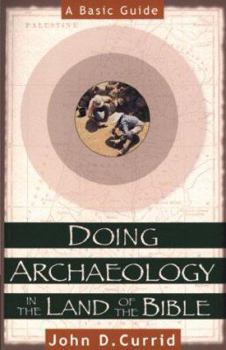Doing Archaeology in the Land of the Bible: A Basic Guide
Select Format
Select Condition 
Book Overview
An introduction to archaeology and the methods archaeologists use to reconstruct the history of ancient Israel.
Format:Paperback
Language:English
ISBN:0801022134
ISBN13:9780801022135
Release Date:August 1999
Publisher:Baker Academic
Length:128 Pages
Weight:0.60 lbs.
Dimensions:0.4" x 5.4" x 8.4"
Age Range:18 years and up
Grade Range:Postsecondary and higher
Customer Reviews
3 ratings
Very informative
Published by Thriftbooks.com User , 14 years ago
I am training to be a docent at a cultural center and museum that features an archeological dig among the various exhibitions. This book is proving to be most informative and useful in preparing me to be knowledgable and prepared.
Changing Over Time
Published by Thriftbooks.com User , 20 years ago
It is asserted often that the results of archaeology are empirical, can be assured, or can be verified. After one reads John Currid's "basic guide," one can see why many past conclusions are no longer accepted and why there is a great debate among archaeologists today about what archaeology has proven. Archaeology is a discipline which continues to learn.Currid tells the story of how archaeology of the land of the Bible began in 1838 when Edward Robinson and Eli Smith traveled the Middle East and identified many biblical sites based upon their modern names. In 1890 William Flinders Petrie began the development of stratio-graphy and its inherent notion that each occupational layer of a mound could be dated by its pottery. After WW II Kathleen Kenyon revolutionized archaeology by digging in small squares within a grid. So, of course as methods change, conclusions change. Currid has written a book for someone who has little prior knowledge of archaeology. One thing that is missing is a chapter on Ground Penetrating Radar. It is interesting to read, but as the subtitle says, it is a basic guide.
An informed & concise introduction...
Published by Thriftbooks.com User , 23 years ago
This is a great little book (128 p.) that aims to instruct neophyte archaeologists in the history and core concepts of biblical archaeology. Given the length of the book, it's obvious that nothing is covered exhaustively. But that's not the aim of the book. Currid answers "what is Biblical archaeology?", then follows with a brief history of the field outlining the different techniques and approaches over the past 2 centuries. He then discusses, in individual chapters, the importance and structure of tells (mounds = habitation), land surveying, site identification, the process of excavation, data collection methods, data interpretation, the importance of pottery in archaeology, the philosophy of pottery chronology, the importance of small finds (anything non-pottery), and finally buildings and structures. He keenly closes the book by applying and integrating the concepts discussed in the previous chapters to the archaeology currently being undertaken at Bethsaida. This final chapter is extremely interesting as he shows the importance of each element in acquiring and interpreting data. A helpful B & W map is found early in the book, on which I was able to find all but 1 or 2 of the many sites he mentions. Closeby the map page is a small table showing the breakdown of the various ages (Bronze, Iron, etc.) and their respective date ranges. Several picures are included that assist in understanding vital concepts. Archaeological terms discussed in the text are defined further in inset boxes on the same page. The book is very well done, and perfect for those interested in biblical archaeology (which everyone should be), but uneducated in the basics of the field. Highly recommended.






